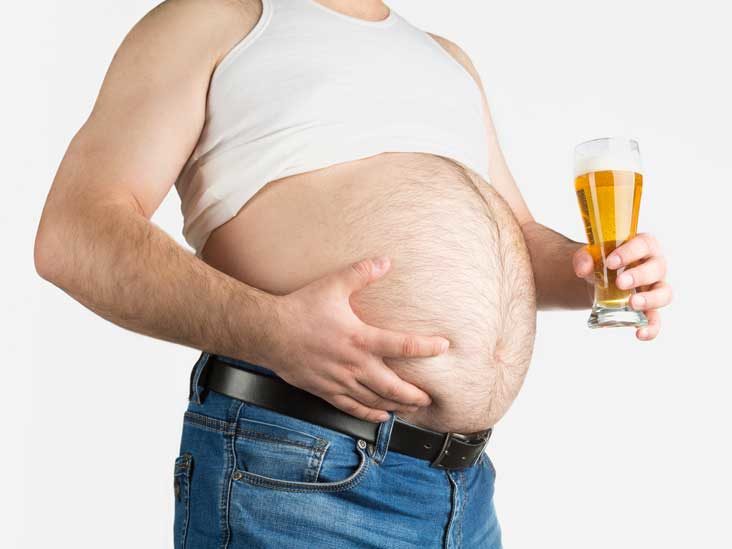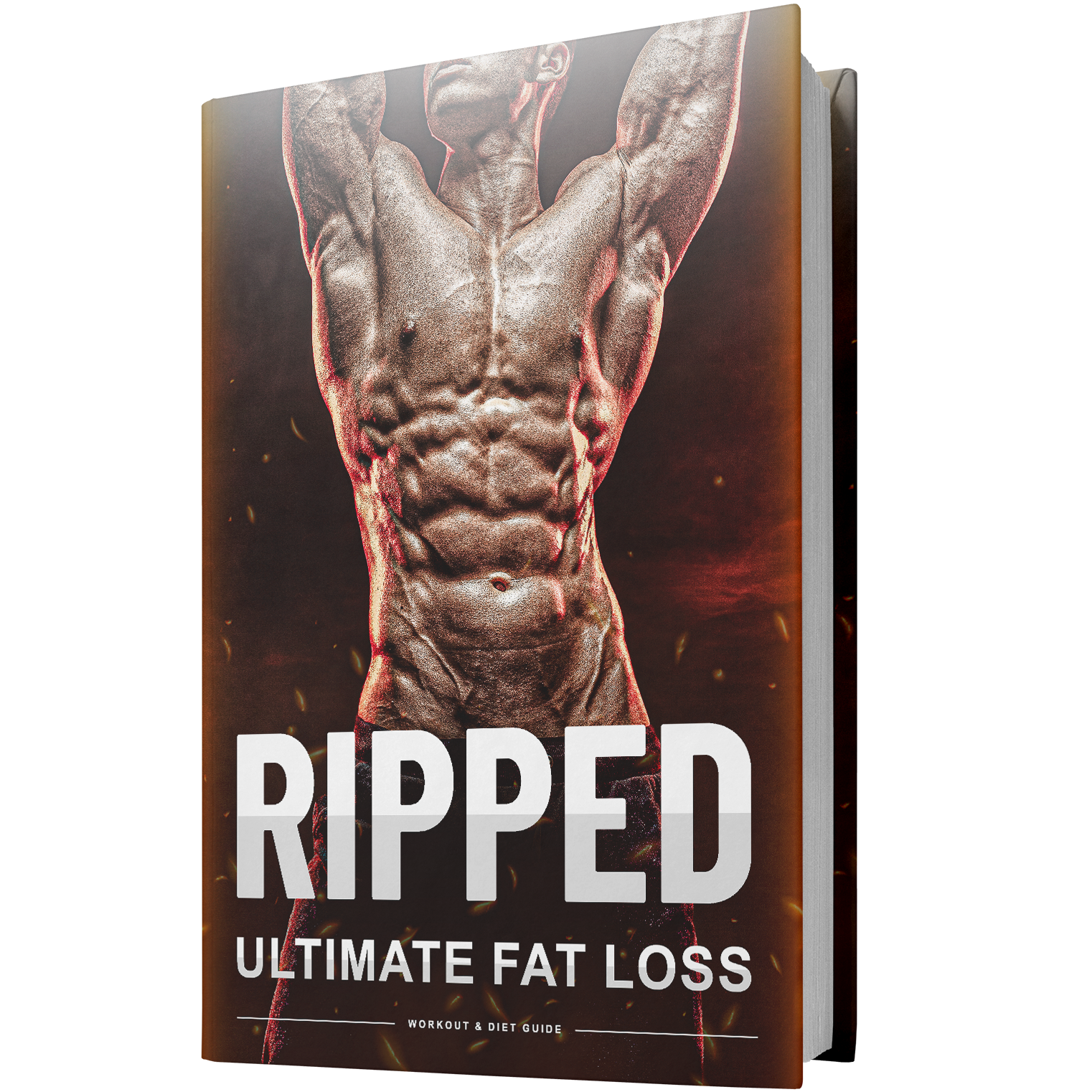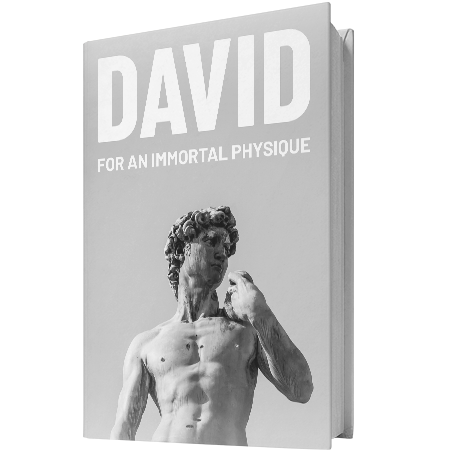Alcohol is one of the worst things you can consume when dieting to lose fat. It can prevent you from burning fat while your body rids itself from toxins.
Aside from this, we will go over several reasons why you should avoid alcohol when dieting to lose fat.
1. Alcohol is Calorie Dense

The only way to lose fat is to burn more calories than you consume — it is a basic accounting equation of calories in calories out (CICO).
But clocking in at a whopping 7 calories per gram, alcohol contains almost double the calories of carbohydrates and protein — but none of the nutritional value of these macronutrients.
A great way to pile on the calories is by drinking as alcohol is very moreish.
In a lengthy drinking session, the calories can rack up fast. Add junk food or fast food into the mix and you can easily accumulate several thousands of calories in only a few hours.
Not only that, but as we will mention below, as alcohol lowers your inhibitions and increases your cravings for calorie-dense food, you are potentially lighting a powder keg of calories when your body is in a suboptimal condition for muscle growth.
Lastly, alcohol is an anti-nutrient that can suppress digestive enzymes and damage cells in the digestive tract rendering nutritious foods less beneficial. It may also leave you less efficient at absorbing protein.
Protein is the most thermogenic macronutrient. Roughly 30% of the calories in protein are consumed through its digestion alone.
Now, let’s observe the amount of calories in your favorite tipple:
| BEVERAGE | SERVING SIZE | CALORIES |
| Beer | ||
| Beer (light) | 12 oz (355 ml) | 103 |
| Beer (regular) | 12 oz (355 ml) | 153 |
| Beer (higher alcohol, craft beers) | 12 oz (355 ml) | 170 to 350 |
| Distilled Alcohol | ||
| Gin (80 proof) | 1.5 oz (45 ml) | 97 |
| Gin (94 proof) | 1.5 oz (45 ml) | 116 |
| Rum (80 proof) | 1.5 oz (45 ml) | 97 |
| Rum (94 proof) | 1.5 oz (45 ml) | 116 |
| Vodka (80 proof) | 1.5 oz (45 ml) | 97 |
| Vodka (94 proof) | 1.5 oz (45 ml) | 116 |
| Whiskey (80 proof) | 1.5 oz (45 ml) | 97 |
| Whiskey (94 proof) | 1.5 oz (45 ml) | 116 |
| Liqueurs | ||
| Coffee liqueur | 1.5 oz (45 ml) | 160 |
| Coffee liqueur with cream | 1.5 oz (45 ml) | 154 |
| Crème de menthe | 1.5 oz (45 ml) | 186 |
| Mixed Drinks | ||
| Bloody Mary | 4.6 oz (136 ml) | 120 |
| Chocolate martini | 2.5 oz (74 ml) | 418 |
| Cosmopolitan | 2.75 oz (81 ml) | 146 |
| Daiquiri | 2.7 oz (80 ml) | 137 |
| Highball | 8 oz (235 ml) | 110 |
| Hot buttered rum | 8 oz (235 ml) | 292 |
| Mai Tai | 4.9 oz (145 ml) | 306 |
| Margarita | 4 oz (120 ml) | 168 |
| Mimosa | 4 oz (120 ml) | 75 |
| Mint Julep | 4.5 oz (135 ml) | 165 |
| Mojito | 6 oz (177 ml) | 143 |
| Pina colada | 6.8 oz (200 ml) | 526 |
| Rum and Coke | 8 oz (235 ml) | 185 |
| Rum and Diet Coke | 8 oz (235 ml) | 100 |
| Tequila sunrise | 6.8 oz (200 ml) | 232 |
| Vodka and tonic | 7 oz (207 ml) | 189 |
| Whiskey sour | 3 oz (89 ml) | 125 |
| White Russian | 8 oz (235 ml) | 568 |
| Wine | ||
| White table wine | 5 oz (145 ml) | 128 |
| Gewurztraminer | 5 oz (145 ml) | 128 |
| Muscat | 5 oz (145 ml) | 129 |
| Riesling | 5 oz (145 ml) | 129 |
| Chenin Blanc | 5 oz (145 ml) | 129 |
| Chardonnay | 5 oz (145 ml) | 128 |
| Sauvignon Blanc | 5 oz (145 ml) | 128 |
| Fume Blanc | 5 oz (145 ml) | 128 |
| Pinot Grigio | 5 oz (145 ml) | 128 |
| Dry dessert wine | 3.5 oz (90 ml) | 157 |
| Red table wine | 5 oz (145 ml) | 125 |
| Petite Sirah | 5 oz (145 ml) | 125 |
| Merlot | 5 oz (145 ml) | 122 |
| Cabernet Sauvignon | 5 oz (145 ml) | 122 |
| Red Zinfandel | 5 oz (145 ml) | 129 |
| Burgundy | 5 oz (145 ml) | 122 |
| Pinot Noir | 5 oz (145 ml) | 121 |
| Claret | 5 oz (145 ml) | 122 |
| Syrah | 5 oz (145 ml) | 122 |
| Red dessert wine | 3.5 oz (90 ml) | 165 |
2. Alcohol Can Prevent You From Burning Fat and Slows Metabolism
Since your body treats alcohol like a toxin, and it can’t be stored in the body, the body burns the calories available in alcohol first to expel these toxins (namely acetaldehyde and acetate).
This process slows your metabolism down, postponing the consumption of calories from other food sources.
Foods consumed while under the influence of alcohol are likely to be stored as fat as your body runs off alcohol for energy until toxins are expelled.
This makes fat loss while enjoying drink doubly precarious as you have to contend with avoiding post-session fast food.
Not only that, but alcohol can lower your energy levels through dehydration and inadequate production of adenosene triphosphate (ATP) which fuels cells during intense exercise.
3. Booze Makes You Consume More Calories

Not only does the sauce contain a ton of calories and makes you less inclined to burn them off, but it also prompts you to eat greasy, calorie-laden foods.
You must have fairly unshakable discipline to choose celery sticks over a burger when you’re several drinks in.
And, of course, these calories add up.
Researchers also found that people who have a drink with lunch are more likely to consume more calories throughout the day.
4. The Sauce Lowers Energy Levels, Making You Less Active
So not only does alcohol contain a ton of useless calories, slow down your metabolism, but it also leaves you dehydrated as it’s a diuretic that can disrupt your electrolyte balance.
After raking in thousands of calories in junk, you will do less to burn them off in the following days — sounds like an awful trade off!
What You Can Do
Try to avoid increasing your total caloric intake if you are going to consume alcohol.
Use sugar-free mixers such as diet soda and avoid beers, wines, or sugary cocktails for the most part.
Stock your fridge with low-calorie snacks such as raw vegetables, fruit, and low-fat dairy products to satiate your appetite after the pub.

Don’t hesitate to email us at [email protected] for personalized coaching and a client questionnaire if you’d like DEDICATED tailor-made personal training on strength training, building muscle, losing fat, developing athleticism, and more — all to your liking, lifestyle, habits, and taste!
Otherwise, don’t forget to claim your FREE eBook detailing how to lose 20lb of fat while building muscle in 12 weeks! You can claim it here.
Alternatively, you can pick up a FREE eBook on fundamental strength principles offering an introductory workout program.












